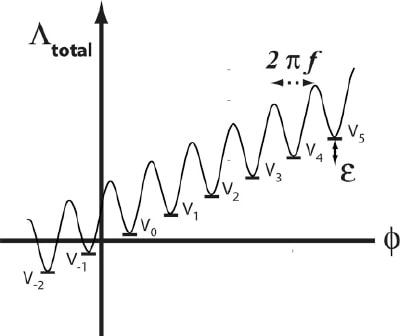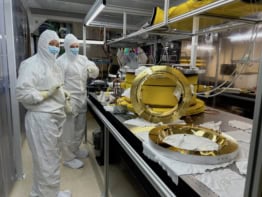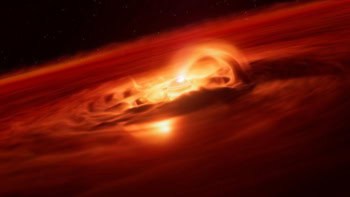Two theoretical physicists have developed a model that could explain why the cosmological constant takes the small, positive value that it does in today's universe. The value of the constant is responsible for the observed acceleration in the expansion of the universe. However, the new model, developed by Paul Steinhardt of Princeton University in the US and Neil Turok at Cambridge University in the UK, will be controversial. It requires that time existed before the Big Bang, assumes that the universe is older than the 14 billion years we think it is, and says that the universe regularly undergoes repeating "cycles" of big bangs and big crunches (Sciencexpress 1126231).

The cosmological constant, or Λ, was first introduced by Einstein in 1917 to explain why the universe did not appear to be expanding. Edwin Hubble later showed that the universe was expanding, causing Einstein to call the constant his “biggest blunder”. But when scientists first measured a value for Λ in 1998, they found it had a tiny, positive value — indicating that acceleration of the universe is speeding up.
However, it is unclear why this value is an incredible 120 orders of magnitude smaller than would be expected if the universe formed under the “standard” Big Bang theory. Solving this mystery is one of the most important challenges in cosmology today.
Physicists have proposed several theories to explain why Λ is so small. One of the most popular — the “anthropic principle” — states that Λ is randomly set and has very different values in different parts of the universe (figure 1). We happen to live in a rare region, or “bubble”, where Λ has the value we observe. This value has allowed stars, planets and therefore life to develop. However, this theory is also unsatisfactory for many scientists because it would be better to be able to calculate Λ from first principles.
Steinhard and Turok’s new theory assumes we live in a cyclic universe, where each cycle from Big Bang to big crunch takes about a trillion years. It postulates the existence of a long sequence of vacuum states, in which Λ changes in a small series of steps, or cycles, of steadily decreasing cosmological constant. The constant is assumed to start out large and positive and hops down the steps to ever lower values.
Each hop takes longer and longer so that the entire universe spends vastly more time at the lowest positive value of Λ, which we see today, than at any other value (figure 2). The last jump, to a negative value, terminates the cycling behaviour of the universe so that it rapidly ends in a big crunch.
Although a similar model was developed by US physicist Larry Abbot in the 1980s, he showed that the descent to small values of Λ took so long that all the matter in the universe would have completely dissipated during this time, therefore resulting in an empty universe. Steinhardt and Turok have fixed this flaw by combining his model with their cyclic model of the universe. The difference now is that a high density of matter is created at the beginning of each cycle so that the universe is never empty.
“We have proposed a mechanism whereby superstring theory and M theory (our best unified theories of quantum gravity to date) allow the universe to pass through a Big Bang,” Turok told PhysicsWeb. “But more theoretical work is needed to see whether our proposal is fully consistent.”
There will, however, be a way of testing the new theory. According to the standard model of the universe, there was a period of rapid expansion shortly after the Big Bang, known as inflation, that bathed the universe with gravitational waves. A series of experiments are currently underway to detect these waves, which have never been seen before. However, Steinhardt and Turok’s model says the gravitational waves generated if their model is correct would be too small to be detected. So if gravitational waves are found in the next few years, it would rule out their theory.




